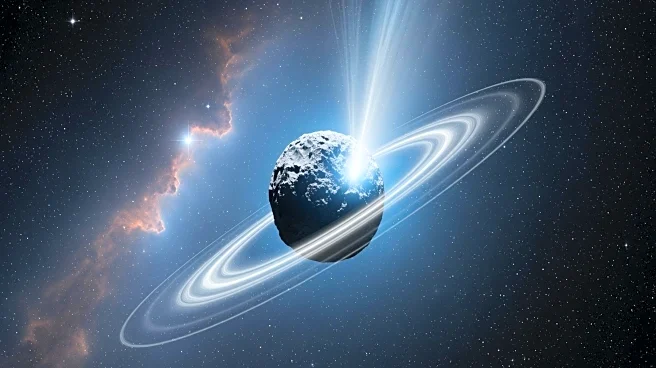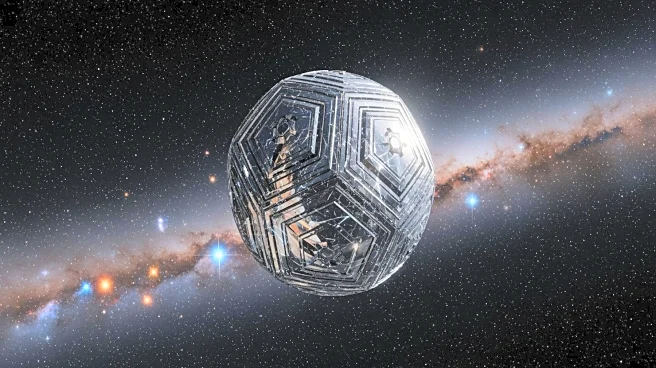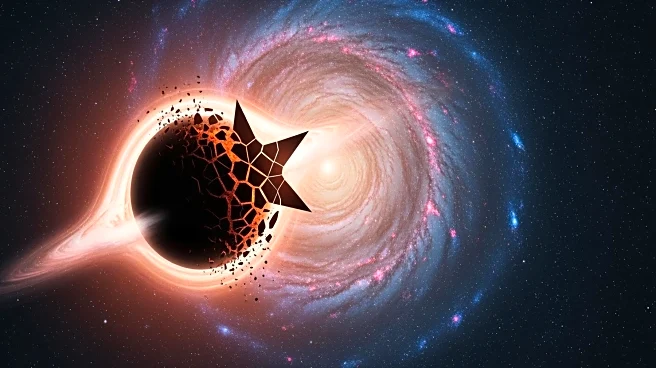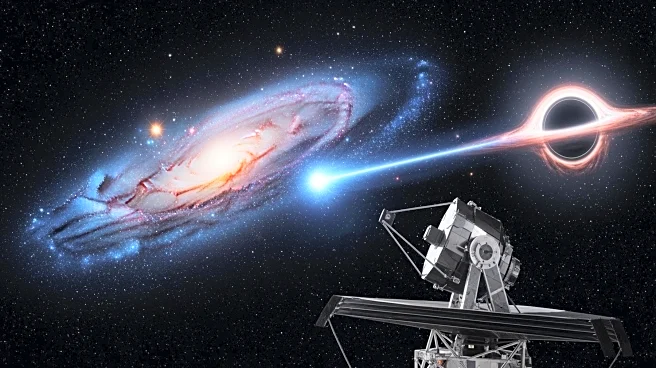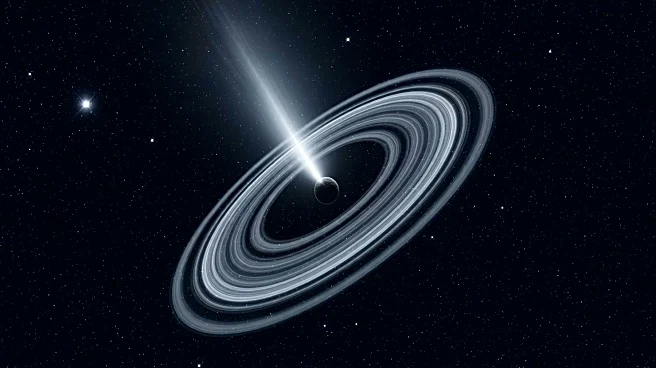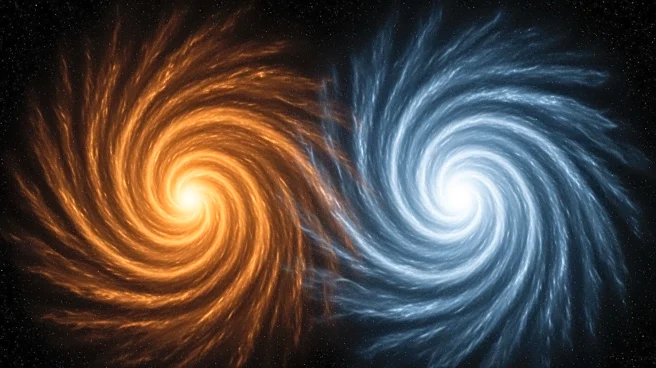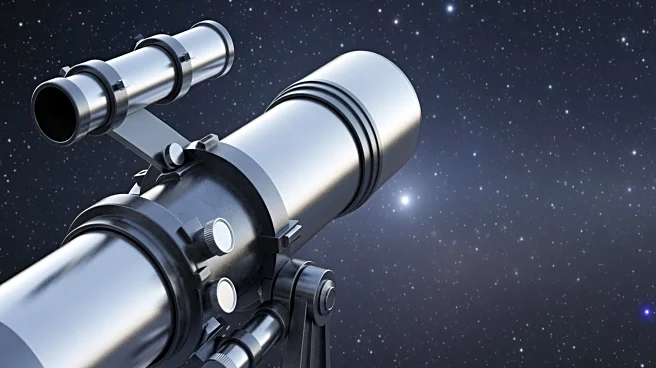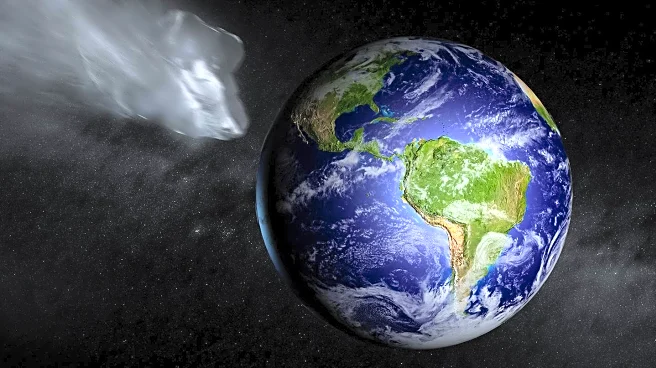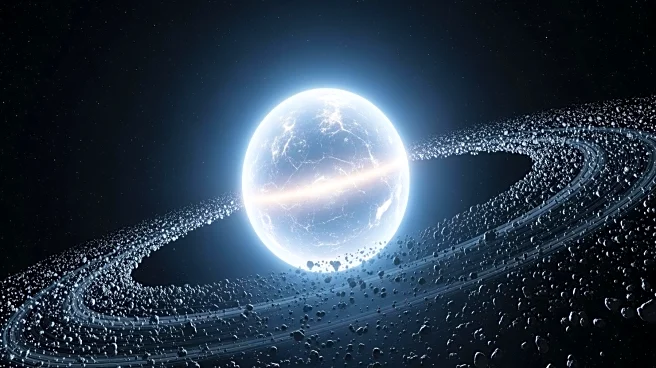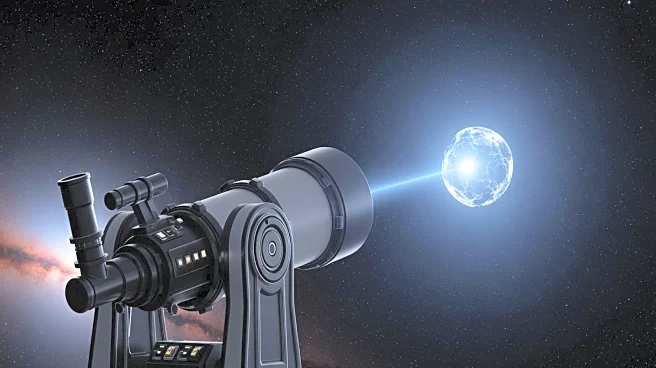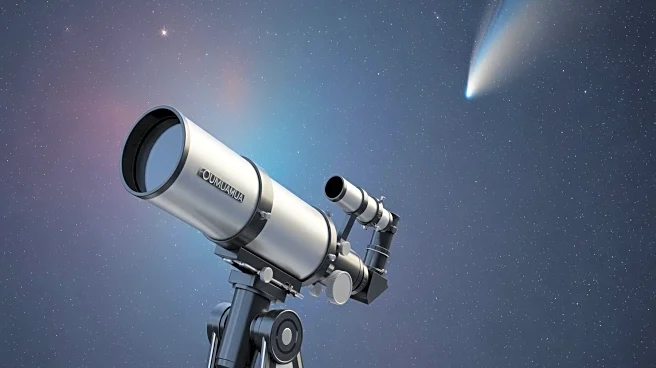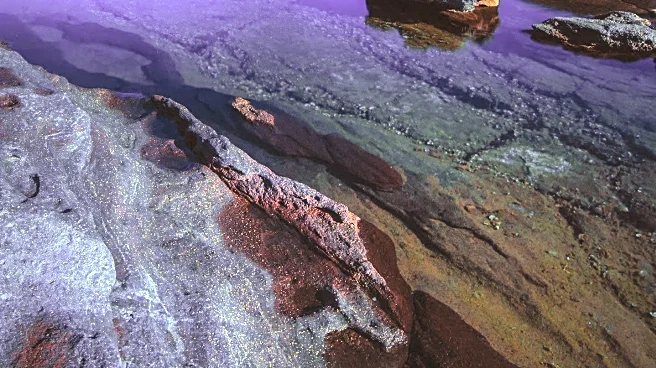What's Happening?
Astronomers have observed the formation of a ring system around Chiron, a comet-like object located between the orbits of Saturn and Uranus. This marks the first time a ring system has been seen forming in real-time. Chiron's rings have been studied through
stellar occultation, a method that involves observing how a distant star's light is blocked by orbiting material. Previous observations suggested the presence of three rings, but recent findings have revealed additional material extending from Chiron's surface and a new ring further out. This discovery provides a unique opportunity to study the conditions that allow ring systems to form and persist, particularly in the cold, icy regions of the solar system.
Why It's Important?
The observation of Chiron's ring formation is significant as it offers insights into the dynamics of ring systems, which are typically found around larger celestial bodies like Saturn and Uranus. Understanding these processes could shed light on the conditions necessary for ring formation and their persistence or dissipation. This knowledge is crucial for astronomers as it may explain why such systems are predominantly located in the outer solar system. The discovery also suggests that there could be hundreds of similar ring systems yet to be discovered, potentially altering our understanding of the solar system's structure.
What's Next?
Astronomers anticipate finding more ring systems around other celestial bodies in the coming years, which could further enhance our understanding of ring formation. Continued observations of Chiron and similar objects will help refine models of ring dynamics and contribute to the broader study of planetary systems. Researchers may also explore the implications of these findings for the formation of planets and moons, as ring systems can play a role in these processes.
Beyond the Headlines
The study of Chiron's rings may have broader implications for understanding the evolution of the solar system. By examining the conditions under which rings form and persist, scientists can gain insights into the early stages of planetary formation. This research could also inform theories about the distribution of matter in the solar system and the potential for similar processes in other star systems.
